How to Grow and Care for Beetroot: Expert Tips for Magnificent Results
- May 9, 2024
- 0 comment
Learn how to grow and care for beetroot with expert tips for magnificent results. Discover the best planting and harvesting advice to ensure a bountiful crop. Diving into the world of beetroot gardening can enrich both your garden and your meals. This guide provides expert tips on how to grow and care for beetroot, ensuring that from soil preparation to harvest, every step contributes to your success.
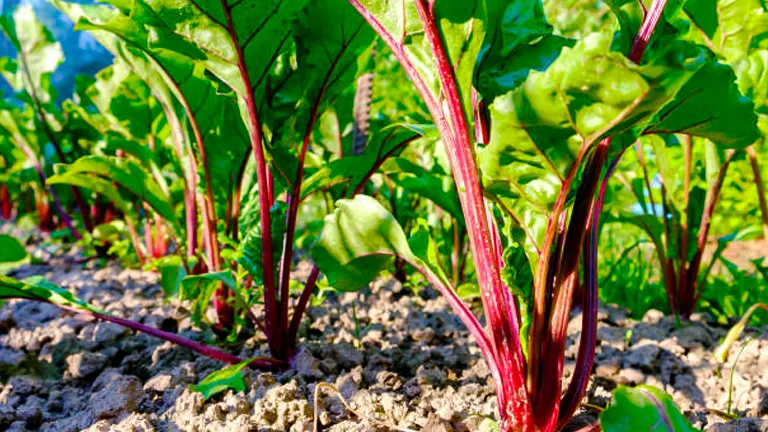
Whether you’re a novice or a seasoned gardener, we’re here to help you achieve magnificent results with your beetroot crop.
Table of Contents
- Choosing the Right Beetroot Variety
- Preparing the Soil
- Planting Beetroot
- Caring for Beetroot Plants
- Pruning and Thinning Techniques
- Managing Pests and Diseases
- Harvesting and Storing Beetroot
- Common Mistakes to Avoid
- Advanced Tips for Maximizing Yield
- Conclusion
- FAQs
Choosing the Right Beetroot Variety
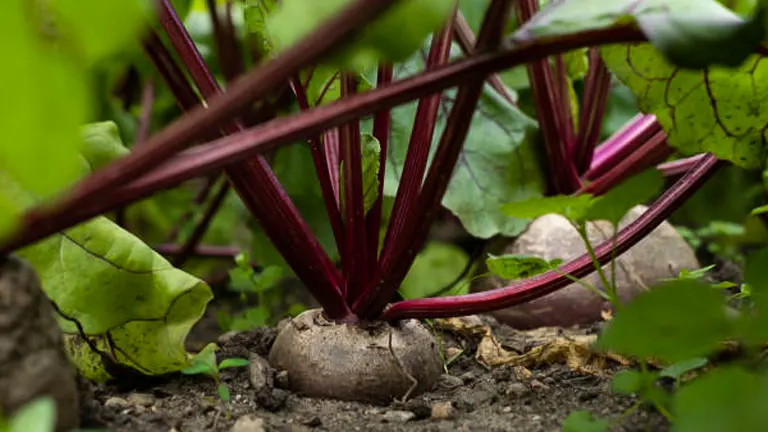
Selecting the most suitable beetroot variety for your garden is a crucial step toward ensuring a successful harvest. Beetroots, scientifically known as Beta vulgaris, come in a range of varieties each suited to different culinary uses, climates, and soil conditions. Below, we explore some popular types and their unique characteristics.
- Detroit Dark Red: This variety is celebrated for its consistently round roots and deep, crimson color. It is rich in betaine and has an average sugar content of 6-8%, making it ideal for cooking and canning. This variety typically matures in 55-65 days and performs well in a wide range of climates.
- Chioggia: Known for its eye-catching concentric rings of red and white, Chioggia originates from Italy and offers a slightly sweeter taste with sugar levels up to 8-10%. It matures in approximately 55 days and is excellent for fresh eating in salads.
- Boltardy: Highly recommended for early planting, Boltardy is bolt-resistant, making it an excellent choice for gardeners in cooler climates. It has a robust flavor and is also suitable for storage. This variety can handle colder soil temperatures better than most and takes about 60 days to mature.
- Golden Beetroot: Unlike its red counterparts, the Golden beetroot has a vibrant golden-yellow hue with a milder, less earthy taste and higher sugar content, usually around 9-12%. It is particularly high in fiber and beta-carotene. It matures in about 55 days and does not bleed its colors like red beets, making it a favorite for creative dishes.
- Baby Beet: Perfect for those who prefer smaller, tender beetroots, Baby beets can be harvested early, typically within 40-50 days. They are ideal for single servings and quick roasting due to their size.
When selecting a variety, it is essential to consider not only the climate and soil conditions but also the specific use cases. For example, varieties like ‘Detroit Dark Red’ and ‘Boltardy’ are more robust and suitable for storage, whereas ‘Chioggia’ and ‘Golden Beetroot’ are better when used fresh.
Here is a comparative table of the different beetroot varieties:
| Variety | Color | Sugar Content (%) | Maturity (Days) | Best Uses |
|---|---|---|---|---|
| Detroit Dark Red | Deep Red | 6-8 | 55-65 | Cooking, Canning |
| Chioggia | Red/White | 8-10 | 55 | Salads, Fresh Eating |
| Boltardy | Dark Red | 7-9 | 60 | Early Planting, Storage |
| Golden Beetroot | Golden-Yellow | 9-12 | 55 | Creative dishes, Fresh Eating |
| Baby Beet | Red | 7-8 | 40-50 | Roasting, Single Servings |
Preparing the Soil
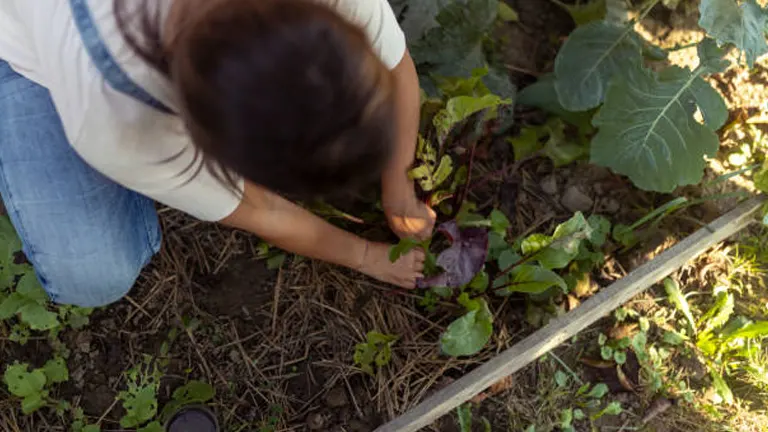
Preparing the soil properly is a cornerstone of successful beetroot cultivation. Beetroot (Beta vulgaris) requires loamy, well-drained soil with a pH level between 6.0 and 7.0. This neutral to slightly acidic range allows for optimal nutrient uptake and root growth.
Step-by-Step Soil Preparation:
- Weeding and Loosening: Clear the garden bed of any existing weeds, which can compete for nutrients and water. Loosen the soil to a depth of at least 12 inches (30 cm) to facilitate root penetration.
- Incorporating Organic Matter: Add 2-3 inches (5-8 cm) of well-aged compost or manure to enrich the soil. This will boost the levels of essential nutrients like nitrogen, phosphorus, and potassium while improving drainage in heavy clay soils and moisture retention in sandy soils.
- Adjusting Soil Structure: If your soil has poor drainage or is too compacted, consider adding perlite or coarse sand to improve aeration and water movement. Conversely, for sandy soils, increasing the organic matter content will enhance moisture retention.
- Conducting a Soil Test: A soil test is crucial to identify the precise nutrient levels and pH of your soil. Testing will indicate if you need to amend the soil with specific nutrients such as lime (to raise pH) or sulfur (to lower pH). The ideal soil composition for beetroot should include moderate nitrogen levels and higher amounts of phosphorus and potassium for robust root development.
Nutrient Composition Table for Beetroot Soil:
| Nutrient | Optimal Range | Function | Adjusting Amendments |
|---|---|---|---|
| Nitrogen | 50-75 ppm | Promotes leafy growth | Fish meal, blood meal, manure |
| Phosphorus | 30-50 ppm | Boosts root development | Bone meal, rock phosphate |
| Potassium | 100-150 ppm | Supports disease resistance | Wood ash, kelp meal |
| pH | 6.0-7.0 | Allows nutrient uptake | Lime (increase), sulfur (decrease) |
Key Recommendations:
- Loamy soils, rich in organic matter, offer the ideal mix of water retention and drainage. Aim for soil that is crumbly and dark in color.
- Avoid over-fertilizing with nitrogen as this can lead to excessive leaf growth at the expense of root development. Focus on balanced fertilizers or organic amendments with sufficient phosphorus and potassium.
- After preparing the bed, water it thoroughly to ensure proper moisture levels before planting. Beetroot requires consistent moisture but should never sit in waterlogged soil.
Planting Beetroot
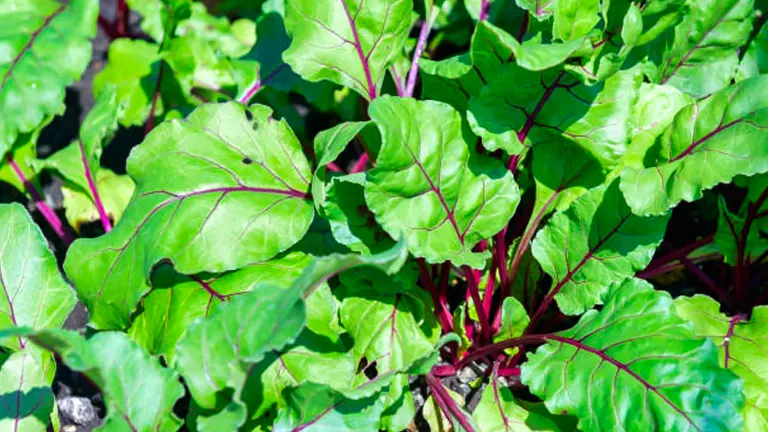
Planting beetroot at the right time and with the correct technique is crucial for successful cultivation. This section will delve into the optimal conditions and methods for planting beetroot to achieve a healthy and productive crop.
Optimal Planting Time:
Beetroot seeds thrive when planted in early spring, as soon as the risk of frost has passed, until mid-summer. This timing allows for a continuous harvest into the fall. For gardeners in warmer climates, beetroot can also be planted in late summer for a winter harvest.
Planting Techniques:
- Direct Sowing: Beetroot seeds are typically robust and are best sown directly into the garden soil. Plant seeds at a depth of approximately 1-2 cm (½ inch) and gently cover with soil. Water the soil lightly but thoroughly after sowing to encourage germination.
- Starting Indoors: In colder regions, starting beetroot seeds indoors in seed trays can extend the growing season. Transplant the seedlings into the garden once they have 2-3 true leaves and the outside temperature has stabilized.
Spacing and Density:
Proper spacing is essential for the development of beetroot. In traditional garden settings, space the seeds about 5 cm (2 inches) apart. Rows should be spaced 30-40 cm (12-16 inches) apart to facilitate easy cultivation and robust growth. For higher density plantings, such as in raised beds or intensive garden plots, slightly reducing the row spacing can be effective, but individual plants should still have ample space.
Table of Planting Specifications:
| Planting Aspect | Specification | Details |
|---|---|---|
| Seed Depth | 1-2 cm (½ inch) | Optimal depth for effective germination. |
| Seed Spacing | 5 cm (2 inches) | Ensures adequate room for root development. |
| Row Spacing | 30-40 cm (12-16 inches) | Allows for cultivation and airflow between plants. |
| Germination Temperature | 10°C (50°F) – 25°C (77°F) | Ideal range for beetroot seed germination. |
| Germination Time | 5-14 days | Time until seedlings emerge. |
| Watering After Planting | Light but thorough | Essential to initiate seed germination. |
Additional Considerations:
- Microclimate Management: If you face an unexpected late frost, consider using row covers to protect the young seedlings.
- Succession Planting: To maintain a steady supply of beetroot, consider staggered plantings, sowing new seeds every 14-21 days during the planting season.
Care for Beetroot Plants
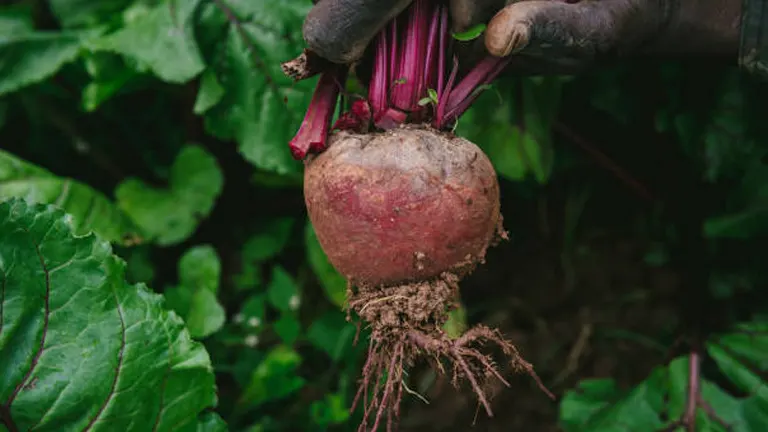
Proper care is essential for nurturing your beetroot plants to full productivity. This involves precise watering, fertilization, and weed management to promote healthy, robust growth.
Watering Practices:
Beetroot plants require consistent moisture to develop well-formed roots. The optimal watering regimen involves providing about 1 inch (2.5 cm) of water per week. This can come from rainfall or manual watering. It’s crucial to water deeply but infrequently to encourage the roots to grow deeper into the soil, which improves the plants’ drought tolerance and overall health.
- Soil Moisture Monitoring: Use a soil moisture meter or check manually by feeling the soil a few inches deep. If it feels dry, it’s time to water.
- Mulching: Applying a 2-3 inch layer of organic mulch such as straw or leaf mold can help maintain soil moisture, reduce temperature fluctuations, and prevent the soil from becoming too compacted.
Fertilization Strategy:
Effective fertilization is crucial for optimal beetroot development, focusing on phosphorus for root growth and potassium for overall plant health. Avoid high nitrogen levels that promote foliage at the expense of the root.
- Initial Fertilization: Apply a phosphate-rich fertilizer two weeks after seedlings emerge to encourage strong root development.
- Ongoing Nutrition: Reapply a balanced, organic, or slow-release fertilizer every 4-6 weeks. Ensure the fertilizer has an N-P-K ratio conducive to root crops, typically lower in nitrogen and higher in phosphorus and potassium.
Weed Management:
Weeds can significantly impact beetroot growth by competing for nutrients, light, and water. Effective weed management is necessary to ensure your beetroots can thrive.
- Manual Weeding: Regularly remove weeds by hand or with a hoe, taking care not to disturb the beetroot roots.
- Chemical-Free Options: Consider using landscape fabric or black plastic mulch to suppress weed growth around beetroot plants, especially in larger plots.
Table of Beetroot Care Specifications:
| Care Aspect | Specification | Importance and Benefits |
|---|---|---|
| Watering Depth | 1 inch per week | Encourages deep root systems, enhances drought resistance |
| Fertilizer Type | Low N, High P & K | Supports root development over leaf growth |
| Mulch Type | Organic (straw, leaf mold) | Retains moisture, regulates soil temperature, suppresses weeds |
| Weed Control | Manual, mulch, or landscape fabric | Reduces competition, promotes healthier growth |
Additional Care Tips:
- Regular inspections can catch early signs of pests and diseases, which are easier to manage before they become widespread.
- In hot and dry periods, increase watering frequency to maintain consistent soil moisture. During rainy seasons, ensure good drainage to prevent root rot.
Pruning and Thinning Techniques
Thinning and occasional pruning are important practices in the cultivation of beetroot, ensuring healthy growth and optimal development of the root vegetable. These techniques help manage plant density and maintain good plant health, which directly influences the quality and size of the harvested beetroot.
Thinning:
Beetroot plants, like many root vegetables, can often emerge crowded if seeds are sown too densely. Thinning is crucial to prevent competition for nutrients, light, and space, which can significantly affect root development.
- Timing and Technique: Begin thinning when beetroot seedlings are about 2 inches tall. Carefully remove the smallest and weakest seedlings to allow a spacing of 3 to 4 inches between each plant. This spacing ensures that each beetroot has enough room to mature without being stunted.
- Utilizing Thinnings: The young beetroot greens removed during thinning are edible and highly nutritious. They can be washed and used fresh in salads or lightly sautéed as a spinach alternative, offering a sweet and slightly earthy flavor.
Pruning:
While beetroot generally requires minimal pruning, attentive management of the foliage can contribute to healthier and more productive plants.
- Leaf Management: Periodically check your beetroot plants for any yellowing or diseased leaves. Removing these promptly helps prevent the spread of disease and improves air circulation around the plants, which is crucial in damp or humid conditions.
- Optimizing Growth: In cases where beetroot plants are extremely bushy, selectively removing a few upper leaves can enhance light penetration and air flow to lower parts of the plant and the root zone, promoting healthier growth.
Additional Tips:
- Monitoring Plant Health: Regularly inspect your beetroot plants as you water or weed. Catching issues like overcrowding or disease early makes them easier to manage and can prevent impact on yield.
- Soil and Sunlight: Ensure that the soil remains loose around the plants even after thinning. Beetroot prefers well-drained soil and benefits from full sunlight, which should be considered when planning plant location and care.
Managing Pests and Diseases
Beetroot is susceptible to a few pests and diseases which can impact growth and yield. Common pests include leaf miners, aphids, and flea beetles. Regularly inspect your plants for signs of damage and manage infestations promptly with appropriate organic pesticides or natural remedies like neem oil or insecticidal soap.
Diseases such as leaf spot and root rot can be mitigated by ensuring good air circulation around the plants and avoiding overhead watering, which can leave moisture on the leaves and lead to fungal infections. Crop rotation is a vital practice to prevent disease build-up in the soil, particularly if beetroots or other root crops have been grown in the same area previously.
Harvesting and Storing Beetroot
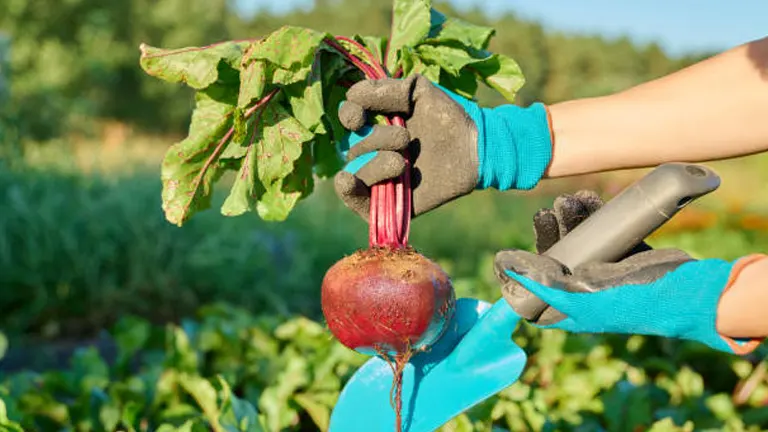
Harvesting beetroot at the right time and storing it properly are crucial steps to ensure you enjoy the best flavor and longevity of your crop. Here’s a detailed guide on how to efficiently harvest and effectively store your beetroot.
Harvesting Beetroot:
Beetroot’s size at harvest greatly influences its texture and taste. The ideal time for harvesting is when the beetroot bulbs are about the size of a golf ball to a tennis ball, roughly 1.5 to 3 inches in diameter. This size range ensures the roots are tender and not overly fibrous.
- Techniques for Harvesting:
- Manual Pulling: If the soil is loose, you can harvest beetroot by pulling it gently by hand. This method reduces the risk of damaging the beetroot.
- Using a Garden Fork: For more compact soil, use a garden fork to gently loosen the soil around the roots before pulling them out. This helps prevent damage to the beetroot and surrounding plants.
- Timing for Peak Harvest:
- Harvest early in the morning or late in the afternoon when the soil is cooler. This can help reduce stress on the plants and improve root firmness at harvest.
Post-Harvest Handling:
Once harvested, handling your beetroot correctly is essential to maximize its shelf life and preserve its nutritional quality.
- Trimming the Tops: Cut the beetroot greens off approximately 2 inches above the root. This prevents the leaves from drawing out moisture and nutrients from the root during storage.
- Cleaning: Gently wash the beetroots under cool running water to remove any soil. Avoid scrubbing too hard to prevent damaging the skin.
- Drying: Allow the beetroots to air dry completely before storing. This reduces the likelihood of mold or rot during storage.
Storing Beetroot:
Proper storage is key to extending the life of your beetroot harvest.
- Ideal Conditions:
- Store beetroots in a cool (0-4°C, 32-40°F), humid environment. A root cellar, basement, or even a refrigerator can provide these conditions.
- Beetroots can be stored in boxes filled with sand, peat moss, or sawdust to keep them dry and insulated from temperature fluctuations.
- Shelf Life: Properly stored, beetroots can last several months. Check periodically for any signs of spoilage or dehydration.
Table of Beetroot Harvesting and Storage Guidelines:
| Aspect | Detail | Importance |
|---|---|---|
| Harvest Size | 1.5-3 inches in diameter | Optimal size for flavor and texture |
| Harvest Method | Hand pulling or garden fork | Minimizes damage to the beetroot |
| Post-Harvest Process | Trim tops, wash gently, and air dry | Prevents moisture loss and spoilage |
| Storage Conditions | Cool, humid environment; sand or peat moss | Extends freshness and usability |
By following these enhanced guidelines for harvesting and storing beetroot, you can ensure that your crop remains fresh, flavorful, and nutritious long after it has been harvested, providing delicious and healthy additions to your meals for months to come.
Common Mistakes to Avoid
Growing beetroot can be straightforward, but common pitfalls can affect the health and productivity of your plants:
- Overcrowding: Planting seeds too closely can inhibit growth. Thinning seedlings early can prevent this issue.
- Inadequate Watering: Either too much or too little water can stress plants, leading to poor root development. Consistent, moderate watering is key.
- Ignoring Soil Health: Beetroot requires well-drained, fertile soil. Neglecting soil preparation or failing to adjust pH can hinder growth.
- Late Harvesting: Waiting too long to harvest beetroots can result in oversized, fibrous roots. Monitor growth closely and harvest at the optimal size.
Advanced Tips for Maximizing Yield
For gardeners looking to get the most out of their beetroot crop, consider the following advanced tips:
- Succession Planting: Stagger your plantings by a few weeks to extend the harvest period and avoid a glut of beetroot all at once.
- Companion Planting: Growing beetroots alongside plants like onions and leeks can help deter pests and maximize garden space.
- Soil Amendments: Incorporating well-rotted compost or aged manure into the soil can enhance fertility and boost yield without the need for chemical fertilizers.
- Mulching: Applying a mulch layer around beetroot plants can help maintain soil moisture and temperature, reducing stress on the plants during hot or dry periods.
Related Post
- How to Fertilize Bougainvillea: A Complete Guide for Stunning Blooms
- How to Fertilize Apple Trees: Essential Tips for a Bountiful Harvest
- How to Fertilize Lemon Trees: Secrets for Thriving Citrus
- How to Fertilize Avocado Tree: A Step-by-Step Guide for Lush Growth
Conclusion
Growing beetroot is a rewarding endeavor that can yield a bounty of colorful, nutritious vegetables for your table. By selecting the right variety, preparing the soil properly, and providing careful maintenance, you can ensure a successful beetroot crop. Remember, the key to magnificent results lies in the details: from the spacing of the seeds to the timing of your harvest. With the guidance provided in this article, you are well-equipped to start your journey of growing beetroot, whether as a beginner or a seasoned gardener seeking to refine your techniques.
FAQs
- What is the best time of year to plant beetroot?
Beetroot can be planted in early spring as soon as the soil is workable and the risk of frost has passed. For a continuous harvest, stagger your plantings every 2-3 weeks until mid-summer. - How deep should beetroot seeds be sown?
Beetroot seeds should be sown about 1-2 cm (½ inch) deep in the soil. Covering the seeds lightly with soil or compost helps ensure proper growth. - Can beetroot be grown in containers?
Yes, beetroot can thrive in containers. Choose a deep pot at least 8-10 inches in depth to accommodate the growth of the roots. Ensure the container has good drainage. - How often should beetroot be watered?
Water beetroot plants deeply once a week, providing about 1 inch of water. This helps encourage deep root development. In very hot weather, you may need to water more frequently to maintain moist, but not waterlogged, soil. - What are some effective ways to control weeds around beetroot plants?
Mulching around beetroot plants with organic material like straw or wood chips can significantly reduce weed growth and help retain soil moisture. Regular hand weeding is also effective but be careful not to disturb beetroot roots. - How do I know when beetroot is ready to harvest?
Beetroot is usually ready to harvest when the roots are about 1.5 to 3 inches in diameter. You can usually see part of the beetroot bulb protruding above the soil. Harvesting too early will yield smaller roots, while waiting too long can lead to tough and woody beetroots. - What should I do with beetroot leaves?
Beetroot leaves are edible and nutritious, rich in calcium, iron, and vitamins A and C. They can be cooked similar to spinach or included in salads for a fresh, slightly peppery flavor. - Can I use beetroot in companion planting? What are good companions?
Beetroot pairs well with onions, bush beans, and garlic, as these companions help deter pests. Avoid planting beetroot near pole beans or mustard, as they can inhibit each other’s growth.
With these expert tips on how to grow and care for beetroot, you’re all set to cultivate vibrant and nutritious beets in your own garden. Embrace the process and enjoy the delicious rewards of your harvest. Happy gardening!

Emma Hudson
Forestry AuthorEmma's experience in farming shapes her detailed guides on gardening and farming tools, providing practical, actionable advice grounded in real-world experience. Her work targets both newcomers and experienced farmers, aiming to enhance their practices with a mix of traditional wisdom and modern techniques. By making complex agricultural concepts accessible, Emma's guides serve as valuable tools for those navigating the challenges of contemporary farming, offering strategies for sustainable success.

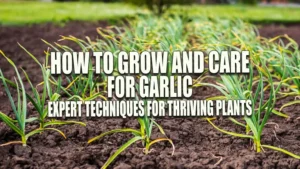





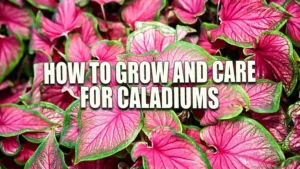
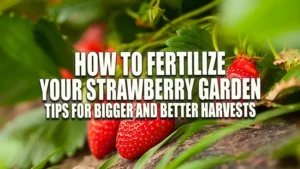
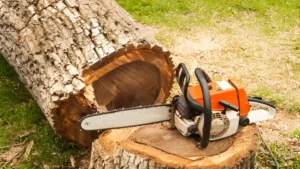
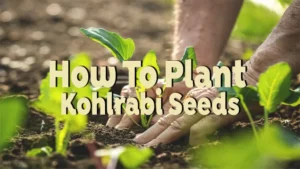

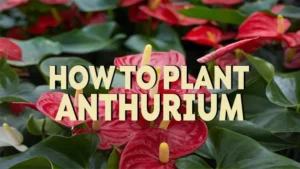
Leave your comment